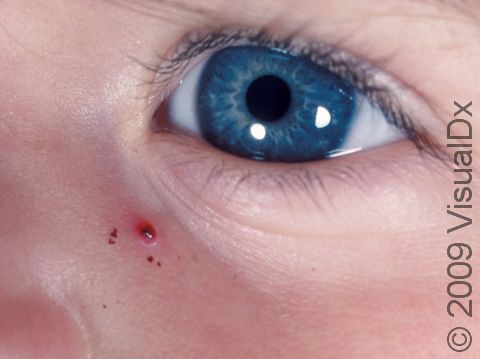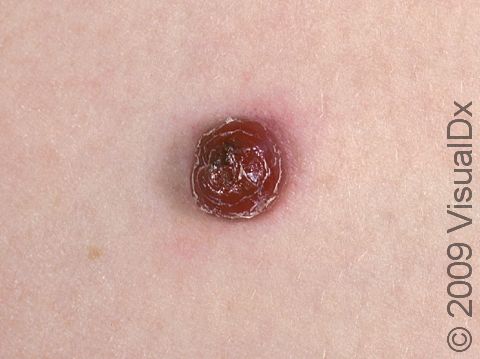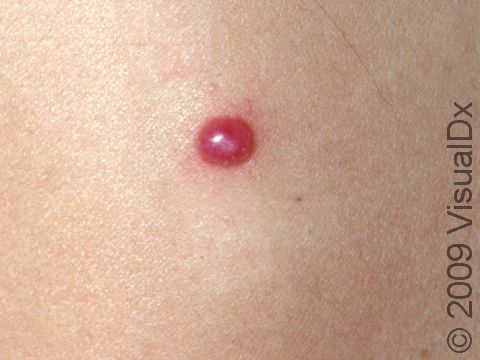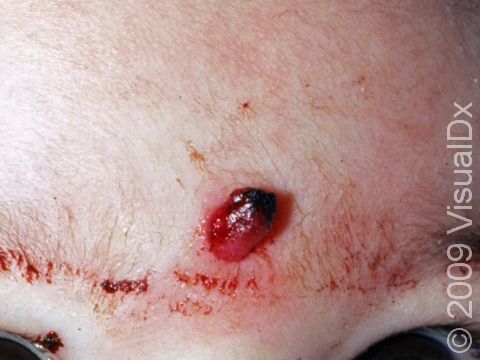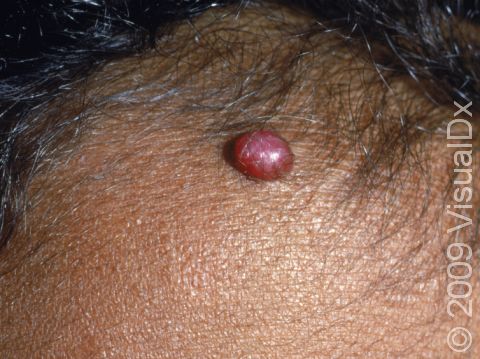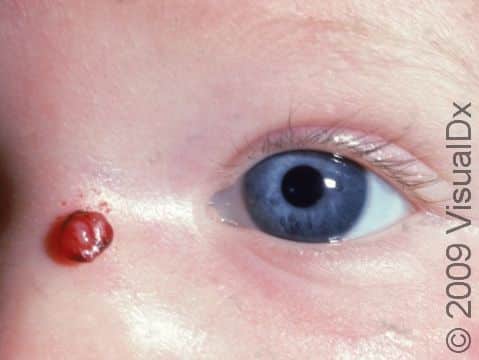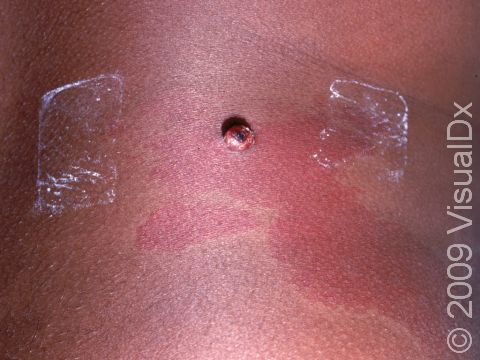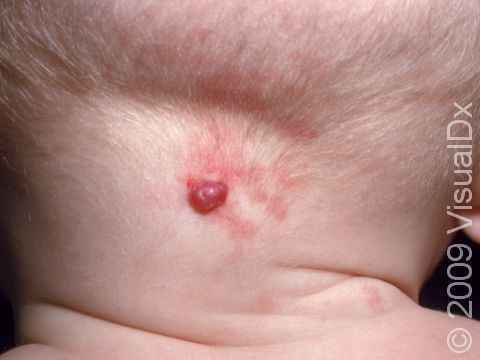Lobular Capillary Hemangioma (Pyogenic Granuloma)
Lobular capillary hemangiomas, also known as pyogenic granulomas, are small areas of inflammation that can occur on a site of injury on the skin, on the lips, or inside the mouth. They are due to the growth of small blood vessels in the skin (capillaries). They are usually bright red and appear as bleeding bumps that can grow rapidly over a few weeks. Because they grow rapidly and bleed easily, they can be distressing to caregivers but are harmless.
Who's At Risk?
Lobular capillary hemangiomas are not common in infants, but they can occur in this age group. They are most common in older individuals.
Signs & Symptoms
Typically, a lobular capillary hemangioma appears as a bright red papule (small, solid bump) or nodule (solid, raised bump) that enlarges rapidly over a few weeks. Lobular capillary hemangiomas are usually 5-10 mm in diameter. They may bleed easily and can be tender. They may scab after bleeding. Rarely, more than one lobular capillary hemangioma may develop at the same time.
The most common locations for a lobular capillary hemangioma include the:
- Hands, fingers, and forearms.
- Head, face, and neck.
- Lips, gums, and inner mouth.
- Trunk.
Self-Care Guidelines
Any rapidly growing skin growth should be examined by a medical professional to confirm the diagnosis. Because lobular capillary hemangiomas may bleed easily, it can help to cover the lesion with a bandage until you see your baby’s medical professional.
Treatments
If the diagnosis of lobular capillary hemangioma is suspected, the medical professional may perform a skin biopsy.
Depending on the lobular capillary hemangioma’s size, location, and symptoms, the medical professional may decide that no treatment is necessary.
Potential treatments include:
- Applying a chemical substance (silver nitrate) that will cause flattening of the lesion.
- Shave removal followed by electrocautery (burning with an electric needle).
- Freezing with liquid nitrogen (cryotherapy).
- Laser treatment.
Lobular capillary hemangiomas can come back after treatment. A lobular capillary hemangioma that comes back is best treated by surgical removal.
Visit Urgency
Make an appointment with your baby’s medical professional, such as a dermatologist, if any rapidly growing or bleeding growth develops on the baby’s skin or in the areas lining their body cavities (mucous membranes), such as the mouth, nose, ears, eyes, or genitalia.
Trusted Links
References
Bolognia J, Schaffer JV, Cerroni L. Dermatology. 4th ed. Philadelphia, PA: Elsevier; 2018.
James WD, Elston D, Treat JR, Rosenbach MA. Andrew’s Diseases of the Skin. 13th ed. Philadelphia, PA: Elsevier; 2019.
Kang S, Amagai M, Bruckner AL, et al. Fitzpatrick’s Dermatology. 9th ed. New York, NY: McGraw-Hill Education; 2019.
Paller A, Mancini A. Paller and Mancini: Hurwitz Clinical Pediatric Dermatology. 6th ed. St. Louis, MO: Elsevier; 2022.
Last modified on June 17th, 2024 at 3:00 pm

Not sure what to look for?
Try our new Rash and Skin Condition Finder
